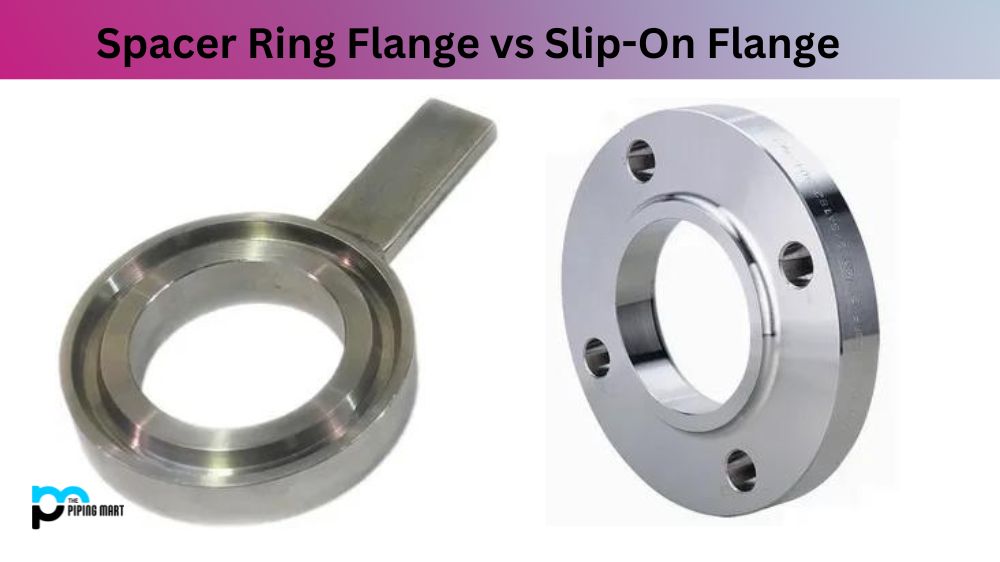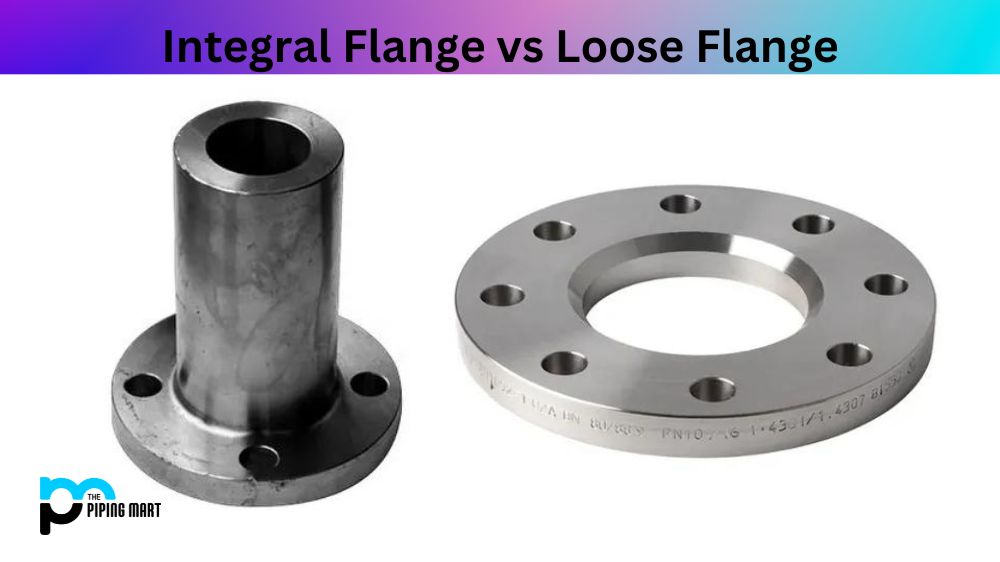Flanges are an integral part of pipelines and are required to provide a strong connection between pipes. Different flanges are used depending on the requirements of pipelines, including spacer ring and slip-on flanges. Although both are common in industrial use, they have some fundamental differences. In this blog, we will be discussing the differences between spacer ring flange and slip-on flange from different aspects.
What is Spacer Ring Flange?
Spacer ring flanges are mechanical devices used to connect pipes or tubes in a pipeline. They provide space between two flanged joints, allowing for expansion and contraction due to temperature or pressure changes. The rings are typically made of steel or other metals and have grooves milled into the outer surface that accommodate sealing gaskets, preventing fluid leakage through the connection. Spacer ring flanges are essential in many industrial applications, from water treatment systems to chemical plants.
What is Slip-On Flange?
A slip-on flange is a type of pipe flange designed to fit over the end of a pipe. It has an internal bore that matches the outside diameter of the pipe, allowing it to slide onto the end and be secured with bolts or welding. Slip-on flanges are typically used in low pressure applications and are available in various materials such as carbon steel, stainless steel, alloy steel and even plastic. They offer easy installation compared to weld neck flanges, making them commonly used for maintenance.
Difference Between Spacer Ring Flange and Slip-On Flange
Design:
The design of the Spacer ring flange includes an additional component, the Spacer ring, that enhances the clearance between the pipe and flange to allow thicker gaskets. This design eliminates the need for a larger flange size and enhances the flow rate in pipelines.
On the other hand, the design of the Slip-on flange lacks this additional component. Unlike the Spacer ring flange, the pipe slides into the flange and is suitable only for low-pressure applications where sealing is not required.
Components:
Spacer ring flange and slip-on flange require different components to work efficiently. The spacer ring flange consists of four parts: the flange, gasket, bolts, and spacer ring. Spacer rings added to this flange provide a large gasket area that can withstand high pressure.
On the other hand, slip-on flanges are made up of three parts: the flange, gasket, and bolts. It has a flat welding collar at the end of the pipe that slides over the flange, ensuring low-pressure applications.
Flexibility:
Spacer ring flanges have high flexibility and can be used with many different types of gasket materials and sizes, making them ideal for pipelines that carry a variety of fluid types. Their design can also accommodate temperature variations in pipelines, making them ideal for industrial use.
Slip-on flanges are less flexible and only work with specific gasket sizes and thicknesses. They are also less tolerant of high temperatures and often involve welding, making them difficult to modify compared to spacer ring flanges.
Industrial Application:
Spacer ring flanges are common in industries that require high-pressure pipelines and cryogenic applications. These flanges are often used in chemical plants, refineries, and cryogenic plants due to their durable design and ability to withstand high pressure.
On the other hand, slip-on flanges are popular in low-pressure pipeline applications where they serve as stopping points in the pipeline’s length. They are often used in water and sewage, firefighting, and air conditioning systems.
Conclusion:
In conclusion, spacer ring flanges and slip-on flanges have essential differences that must be considered when determining which flange type to use in a pipeline. Both flanges have their desired applications, but choosing the right flange for your condition is crucial. Therefore, if you plan to use flanges in your pipeline, you should consider the characteristics of the pipeline and your specific application requirements before choosing the appropriate flange.

Meet Bhavesh, a seasoned blogger with a wealth of knowledge and experience. From metal products manufacturing to retail, Bhavesh has a diverse background in various industries and is dedicated to sharing his insights and expertise with readers.




